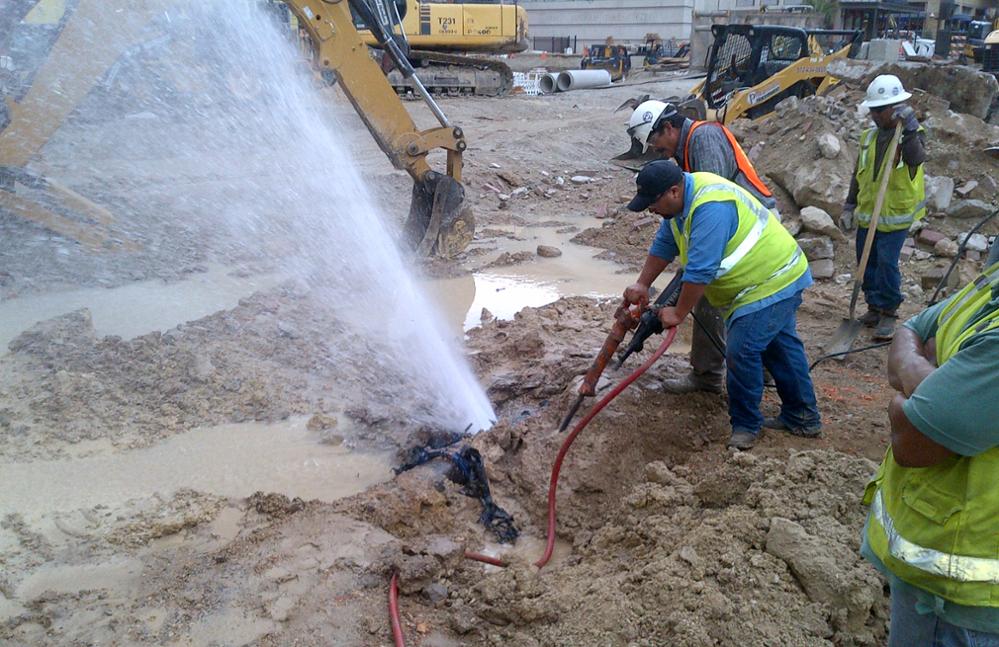Validating water loss audits leads to better data and water savings Posted on March 7, 2023

Water conservation is more than just turning off your tap or limiting lawn irrigation to save water. As a popular strategy recommended in the state water plan to help meet future water supply needs in Texas, water conservation includes identifying and addressing leaks, breaks, inaccurate customer meters, and more that can result in recoverable water loss. Utilities conduct and submit water loss audits to the Texas Water Development Board (TWDB) to determine how much water is being lost in their systems and how to improve water loss control.
An amendment authorized at the TWDB’s February 9, 2023, Board meeting will make changes to the water loss audit process in Texas to better align with industry standards and improve data, including establishing a water loss audit validation process. By reducing water loss, utilities can increase their water use efficiency, improve their financial status, and assist with long-term water sustainability.
Why complete a water loss audit?
When utilities understand where and how much water is being lost from their distribution systems, they can better track and improve water loss. Utilities can target where infrastructure upgrades may be needed to improve efficiency and mitigate future water loss, ultimately increasing their water supply and saving money.
All retail public water systems in Texas with more than 3,300 connections or those with a financial obligation to the TWDB are required to complete and submit a water loss audit annually by May 1. Legislation was passed in 2013 to require utilities that receive financial assistance from the TWDB to use a portion of the funding to mitigate the utility’s water loss if it meets or exceeds a specific threshold.
Data from the water loss audits is also used in regional water planning when establishing water management strategies, which can include water loss mitigation through meter testing and replacement; leakage management programs; and pipe repair, rehabilitation, and replacement.
Validating the data
Accurate and reliable data is critical to targeting mitigation efforts that effectively reduce water loss. Starting January 1, 2025, all utilities receiving financial assistance from the TWDB will be required to have their annual water loss audits validated to improve the quality of the data. The validation process includes examining water loss audit inputs to identify and correct data inaccuracies. Several states currently validate water loss audits, including California, Georgia, and Indiana.
“Water loss validation can assist utilities and the state to better direct water loss mitigation resources and funding,” said John Sutton, conservation manager at the TWDB.
TWDB staff will work with utilities to validate their submitted water loss audits, or utilities can choose to have the audit validated by others if the validation follows the TWDB’s guidelines. To help facilitate compliance, the TWDB will begin offering validation services to utilities later this year.
Updated water loss thresholds
Another aspect of the amendment approved at the TWDB’s February 9 Board meeting includes updating the water loss thresholds. Since the TWDB approved the initial water loss thresholds in 2014, the American Water Works Association Water Loss Control Committee has developed new water loss performance indicators, and more recent water loss audit data is now available to update the thresholds.
New thresholds were developed from quality-controlled, statewide data from 2015 to 2020 and are based on connection density rather than population to align with the industry’s standards. The water loss threshold values will help address concerns with utilities that have a high volume of real water loss and ensure water loss mitigation is included as an effective strategy for utilities receiving financial assistance for drinking water projects. These thresholds will apply only to a utility that requests financial assistance from the TWDB for a water supply project and will be used in calculating water loss thresholds for applications for financial assistance received after July 1, 2023.
“Water loss is a huge issue across the state, and I think it’s on everybody’s radar that we have aging infrastructure and pipes leaking water into the ground,” said TWDB Board member George Peyton at the Board meeting. “Moving to a threshold system based on connection density is a very smart move, and validating these results to make sure they’re accurate is extremely important for a state that needs every drop of water we have.”
To learn more about water loss audits, visit the TWDB’s website.
This article is posted in Water Planning / Water Supply / Conservation .